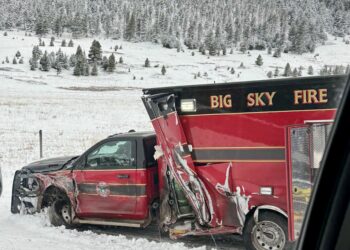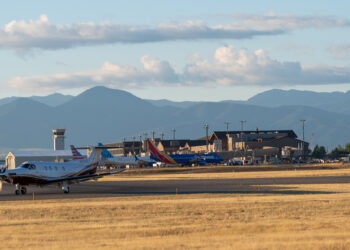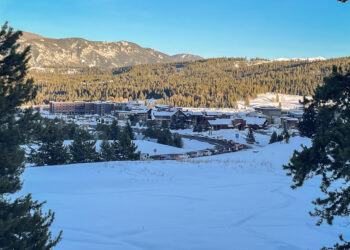What to expect this ski season
By Gabrielle Gasser EBS STAFF
BIG SKY — A La Niña winter has been forecast by the National Oceanic and Atmospheric Administration, which in theory, means lower temps and higher precipitation in the Rocky Mountains this winter. However, while it is tempting to expect a massive snow year, it’s important not to jump the gun.
The forecast was originally made by NOAA on Sept. 10 and since then, the chance has risen to 85 percent. While this seems promising, it remains only a chance for now. Lucas Zukiewicz, a water supply specialist with the Natural Resources Conservation Service of Montana, emphasized the fact that even if La Niña conditions persist, this could still be an average or even below average winter.
Zukiewicz runs the Snow Telemetry and Snow Course Data and Products network across Montana, Wyoming and South Dakota. He measures macro-scale weather and snowpack patterns in this area and tracks the water supply.
Karl Birkeland, the Director of the National Avalanche Center, joined Zukiewicz in advising caution.
“It’s important to understand that this [forecast] is a probability and there is no certainty associated with that,” Birkeland said. “If you look back over winters, you’ll find La Niña winters where we had big winters and dry ones. And El Niño winters that were wet and dry,” he added.
So, what exactly is a La Niña winter and how is it predicted?
La Niña and El Niño, according to NOAA, are global weather patterns resulting from variations in ocean temperatures in the Equatorial Pacific. These two patterns are opposite phases of the El Niño Southern Oscillation cycle. El Niño is the warm phase of this cycle and La Niña is the cold phase. These phases generally last 12 months but can last for years with the tendency of El Niño to occur more frequently.
La Niña is predicted based on sea surface temperatures and atmospheric circulation anomalies over the tropical Pacific Ocean. Additionally, the Atlantic hurricane season, which has been record-breaking this year, is impacted by La Niña conditions and serves as another indicator that the cycle will continue.
In the U.S., a La Niña cycle promises a warm, dry winter in the South and a cool, wet winter in the North. Theoretically, this means more precipitation and more snow in the Mountain West.
Realistically, as Birkeland and Zukiewicz said, the prediction simply means a higher chance of increased precipitation, not a certainty.
Zukiewicz emphasized the complexity involved in predicting long-term global weather patterns, and La Niña is not the only index. The Pacific Decadal Oscillation is another important factor as well as the Arctic Oscillation, which Zukiewicz said, can be an even bigger factor for Montana.
According to Zukiewicz, “A big factor for us is the cold air stream that comes from the arctic oscillation.” This circulation pattern directs the cold air coming out of Canada and can be instrumental in bringing snow to the Rockies.
The last decade in Montana has been fairly wet according to Zukiewicz. “For our area the two strong La Niñas for the last decade or so were in October of 2010 to April of 2011,” he said.
What is interesting about these back-to-back La Niña winters is the difference in snowfall between the two. Zukiewicz described the winter of 2010 as an average year, and 2011 as record breaking. It is likely that 2011 was notable because it was the second consecutive year of the La Niña cycle, according to Zukiewicz.
Regardless of how much snow the possible La Niña brings to Big Sky this year, Birkeland expects to see a big uptick in backcountry traffic in the area. The network of avalanche centers throughout the West are gearing up for a busy winter and a higher demand of their services, especially advisories and classes.
This summer, due to the lack of communal activities available, there was an increase in public land use, according to Birkeland.
“I think this winter we will see lots of people in the backcountry on skis, snowmobiles snowshoeing, the whole nine yards,” he said.
His advice to all seasoned and new backcountry users is simple, get the training, get the gear and get the forecast.
Although we cannot be certain that this La Niña winter will be anything special, Zukiewicz is hopeful.
“We always hope for a lot of snow,” he said. “I like being outside and to play outside as much as anybody else, so we are always hoping that La Niña forecast is cold and really wet.”













